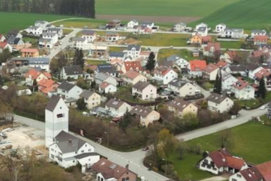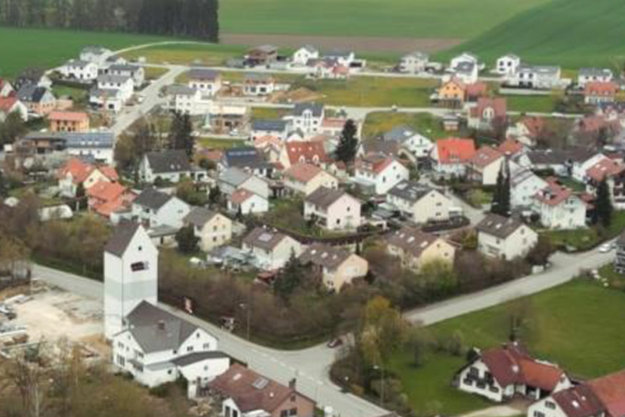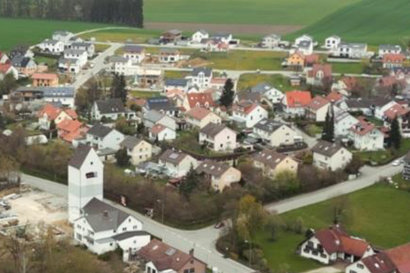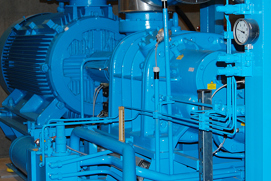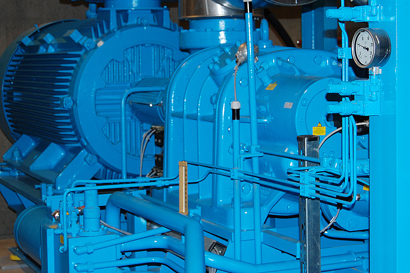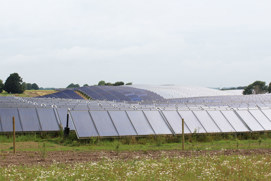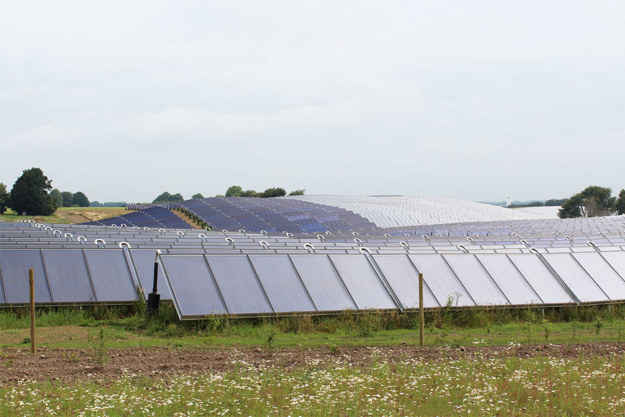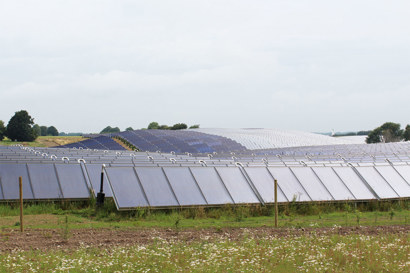A combined differential pressure controller and flow controller (PQ) consists of two independent differential pressure controllers and a flow restrictor (manual balancing valve) integrated in one valve body.
This device has two functions:
1) A differential pressure controller maintains fixed differential pressure over the flow restrictor (flow control). This ensures automatic flow limitation, independent of pressure variations in the system.
2) A differential pressure controller maintains constant differential pressure over motorized control valves or over the entire loop.
This is the best solution for the district heating utility as it enables both variables (maximum flow and differential pressure) to be set independently of the consumer’s heating control system. Especially when the subscriber station is owned by the consumer, the utility has no influence over flow limitation at the consumer’s end of the system.
This enables the district heating utility to control the flow available for each consumer as well as the differential pressure control at the substation. This allows efficient network balancing.
Another solution is the PB controller, which consists of one pressure controller and a flow restrictor (manual balancing valve). The PB is used in systems where independent flow and differential pressure are not required.

Differential pressure and flow controllers in district heating or cooling systems (variable flow)
Balance your network, save energy and improve end user comfort by hydronic balancing and control of district energy networks.
Features and benefits
Eliminates pressure variations and provide optimum operating conditions with improved temperature control quality
Made for demanding systems, resistant to corrosion, cavitation and dirt
Connected system is protected against pressure surges, fluctuations, cavitation and noise
Tools and apps
Application guide
FAQ
Case studies
-
if (isSmallPicture) {


 Successful transition from oil boilers to a local heating network in Eurasburg
Successful transition from oil boilers to a local heating network in EurasburgIn the Wittelsbacher Land near Augsburg the local network in Eurasburg supplies heat to 80 buildings using a wood chip heating system. Danfoss’ substations ensure efficient heating in all building types, and its modern SCADA solution enables remote system monitoring and management.
-
if (isSmallPicture) {


 A cost-effective solution: district cooling in central Copenhagen
A cost-effective solution: district cooling in central CopenhagenEnergy efficiency was a major consideration in the design of Copenhagen’s district cooling project, where VLT® drives contribute to reducing CO2 emissions by more than 3000 t annually.
-
if (isSmallPicture) {


 Solar heating plant reduces CO2 emissions by 15,700 tonnes annually
Solar heating plant reduces CO2 emissions by 15,700 tonnes annuallyThe world’s largest solar heating plant in Silkeborg, Denmark harnesses energy to heat the homes and workplaces of 40,000 citizens. It supplies 18-20% of the annual heat consumption in the city of Silkeborg, Denmark, which has an ambitious target of CO2 neutrality in heat production by the year 2030.



